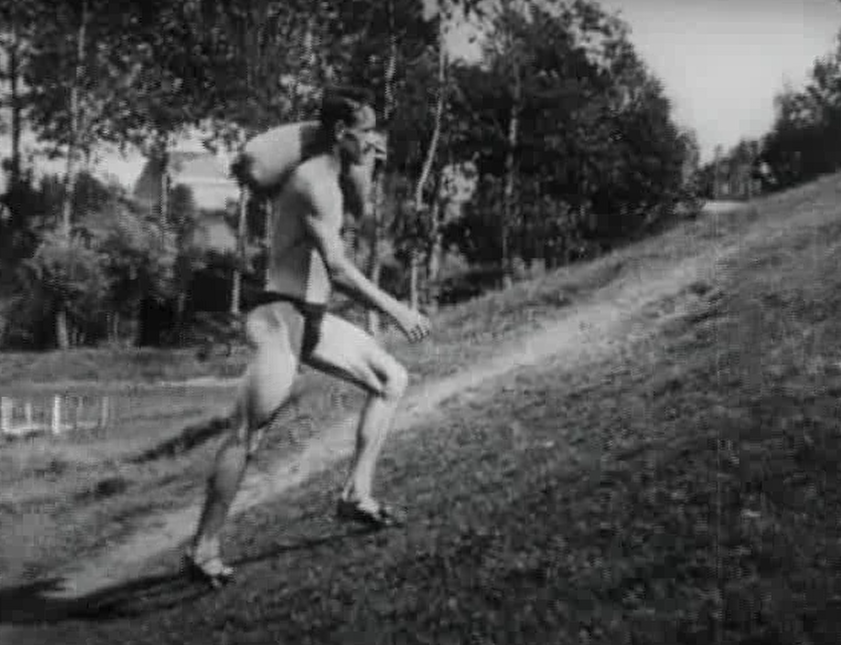A bodily grammar configuration. The visible, the invisible, and the non-visible as the foundation of images and bodies in motion

Published 2022-11-29
Keywords
- Body,
- Movement,
- Image,
- Techniques,
- Cinematography
How to Cite
Abstract
The birth of cinematography as a device that acts on bodies allows us to think of informative documentary cinema as a resource to understand what is considered right to show and interpret the senses of reality that we intend to project through this show. With the mass production of celluloid-based films in the 1920s and 1930s, moving images gave new meaning to what can be considered correct movement, thereby establishing a bodily grammar. That implies methods, sequences, distances, and distinctive harmonies: film editing has produced particular ways of perceiving bodies in motion, articulated in the construction of a correct narrative, with the establishment of certain techniques. For this reason, the proposal is to analyze old images of bodily practices filmed for educational purposes, which represent a succession of documentary shots of people who perform physical activities in front of the camera with the intent of transmitting a message from reproduction. It is thus possible to observe a clear distance with the current registers and a homogenization, succession, and simultaneity of the techniques (corporeal and cinematographic), which produce the configuration of what is visible, invisible, and non-visible in images and in moving bodies. In the background, I propose to think of the oldest surviving moving images of L’École Normale Militaire de Gymnastique de Joinville-Le-Pont, the place where (modern) physical education and the technology that allowed cinema was born, thanks to the works of scientists Étienne Jules Marey and Georges Demeny.
References
• Benítez Iglesias, Antonio Jesús (2005). “Espectáculo futbolístico y comunicación televisiva”, Tesis de Doctorado Facultad de Ciencias de la Información, Universidad Complutense de Madrid.
• Benítez Iglesias, Antonio Jesús (2013). Realización de deportes en televisión, Madrid: Instituto Oficial de Radio y Televisión.
• Benjamin, Walter (2012). La obra de arte en la era de su reproductibilidad técnica y otros textos. Buenos Aires: Godot.
• Bourdieu, Pierre (2000). La dominación masculina. Barcelona: Anagrama.
• Bourdieu, Pierre (2014). Sobre el Estado. Barcelona: Anagrama.
• Cépède, Frédéric (2018). “Cinéma, mesure des émotions et diffusion: le docteur Toulouse, le biologiste Cépède et le service scientifique des établissements Pathé frères (1918-1919)”. 1895 2 (85), 32-51.
• Cuarterolo, Andrea (2015). “El cine científico en la Argentina de principios del siglo 20: entre la educación y el espectáculo”, História da Educação, 19 (47), 51-73.
• Deleuze, Gilles (2009). Cine I: Bergson y las imágenes. Buenos Aires: Cactus.
• Dussel, Inés (2003). “La gramática escolar de la escuela argentina: un análisis desde la historia de los guardapolvos”, Anuario. Historia de la Educación, 4, 11-36.
• Dussel, Inés y Gutiérrez, Daniela (2006). Educar la mirada. Políticas y pedagogías de la imagen. Buenos Aires: OSDE.
• Eisner, Elliot (1985). “Los tres currículos que enseñan todas las escuelas. El currículum nulo”, The educational imagination: on the design and evaluation of School programs. New York: Mac Millan.
• Foucault, Michel (1978). Las palabras y las cosas. Madrid: Siglo XXI.
• AUTHOR (2017).
• AUTHOR (2019).
• AUTHOR (2021).
• Gleyse, Jacques y Bui-Xuân, Gilles (2002). L'émergence de l'éducation physique. Georges Demenij (1850-1917) et Georges Hébert (1875-1957). Paris: Hatier.
• Pociello, Christian (1999). La Science en mouvements: Etienne Marey et Georges Demenÿ (1870-1920). PUF: Paris.
• Rancière, Jacques (2013). Figuras de la historia. Buenos Aires: Eterna Cadencia Editor.
• Scharagrodsky, Pablo y Gleyse, Jacques (2013). “El Dr. Enrique Romero Brest, las visitas a instituciones europeas de formación y el Congreso de Educación Física realizado en 1913 como indicadores de la globalización y la nacionalización de la «cultura física»”, Staps, n° 100, pp. 89-107.
• Serra, María Silvia (2011). Cine, escuela y discurso pedagógico: articulaciones, inclusiones y objeciones en el siglo XX en Argentina, Buenos Aires: Teseo.
• Simonet, Pierre y Veray, Laurent (2003). “L'empreinte de Joinville: 150 ans de sport”, Les cahiers de l'INSEP, INSEP.
• Soares, Carmen (1994). Educação Física: raízes europeias e Brasil. Campinas: Autores Associados.
• Tyack, David y Cuban, Larry (2001). En busca de la utopía. Un siglo de reformas de las escuelas públicas. México: Fondo de Cultura Económica.
• Vértov, Dziga (1974). El cine ojo. Madrid: Fundamentos.
